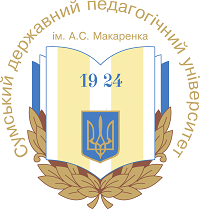ОБРАЗ КАССАНДРИ У НІМЕЦЬКІЙ ЛІТЕРАТУРІ ХХ СТ. (Г.Е.НОССАК, В. ВУЛФ)
DOI:
https://doi.org/10.32782/philspu/2025.9.17Ключові слова:
рецепція, Кассандра, реконструкція, міфологічний сюжет, ТрояАнотація
У статті розглянуто особливості репрезентації образу Кассандри у творах німецьких письменників ХХ ст. Г.Е.Носсака й К.Вольф. Характерним є те, що в їхній творчій практиці цей образ актуалізується у контексті політичних та економічних катаклізмів.В оповіданні «Кассандра» Г.Е. Носсака сюжетна лінія Агамемнон і Кассандра є такою ж, як і в творах античних трагіків. Трагедію загиблих Агамемнона та його полонянки Кассандри письменник проєктує на життя у післявоєнній Європі. Самобутньо переосмислюючи античний міф, автор вибудовує власну філософську концепцію життя.Образ античної пророчиці у повісті «Кассандра» К. Вольф набуває символічних рис жінки, яка шукає себе у суспільстві, в якому її некомфортно й небезпечно. Найвиразнішим проявом трагізму є сцена вбивства Ахіллесом Троїла, в ній не тільки розкривається трагічна доля провісниці, якій ніхто не вірив, але й проявнюється авторське застереження людству перед загрозою ядерної війни. Історія життя Кассандри К.Вольф – це розповідь про те, як можна себе зруйнувати як особистість, утратити власне «я». Письменниця досить вільно інтерпретує сюжет античного міфу, пропонуючи читачеві його своєрідну реконструкцію. Для розуміння її твору не потрібне знання першоджерела, повість може розглядатися як цілком завершена, замкнута в собі історія, яка не потребує додаткових знань чи тлумачень. Оповідання Г.Е.Носсака апелює не тільки до досвіду реципієнта щодо історії, але також і до його знань міфології, на чому будується інтертекстуальна гра з читачем. Оповіданню притаманний глибокий психологізм, автор прагне «прочитати» в міфологічному сюжеті ознаки реальності, актуалізувати його. Твір має виразно суб’єктивно-ліричну форму, його просторово-часова організація є доволі складною. Саме на універсальності міфу про Кассандру вибудовуються паралелі між Троянською війною та Другою світовою війною. Простежується певна паралель між взяттям Іліону та Берліна.
Посилання
Бітківська Г. Рецепція образу Кассандри в однойменних творах Лесі Українки та Крісти Вольф: теоретичний аспект. URL: http://www.philology.kiev.ua/library/zagal/Literaturoznavchi_studii_2011_33/040_045.pdf
Дубенскова В. Нова реміфологізація античного міфу в повісті «Кассандра» Крісти Вольф.Наук. зап. Тернопіл. держ. пед. ун-ту ім. В.Гнатюка. Серія: Літературознавство. 2004. Вип.14. С.232-239.
Евріпід. Трагедії. Пер. з давньогрецької А. Содомори та Бориса Тена. Київ: Основи, 1993. 448 с.
Есхіл. Трагедії. Пер. з давньогрецької А. Содомори та Бориса Тена. Київ: Дніпро, 1990. 463 c.
Музичук М. «Uber der grenze des daseins»: «Міфічний» простір у прозі Ганса Еріха Носака. Studia methodologica, 2014 (38). URL: https://www.academia.edu/9372144/Studia_methodologica_38
Нямцу А., Рихло П.Коли не ймуть словам пророчим віри («Кассандра» Кристи Вольф – ще одне повернення до вічної теми). Всесвіт. 1985. №10. С.144-150.
Nossack H.E. Interview mit dem Tode. Krüger/Berlin, 1948. S.65-96. URL: https://portal.dnb.de/bookviewer/ view/1052420737#page/n11/mode/1up
Wolf Christa Kassandra: Erzählung. Frankfurt: Luchterhand, 1986. URL: https://royallib.com/read/Wolf_Christa/ kassandra.html#0







